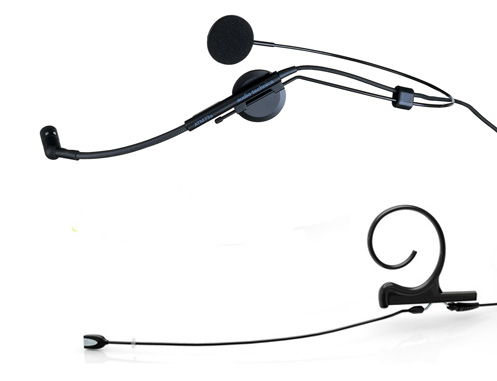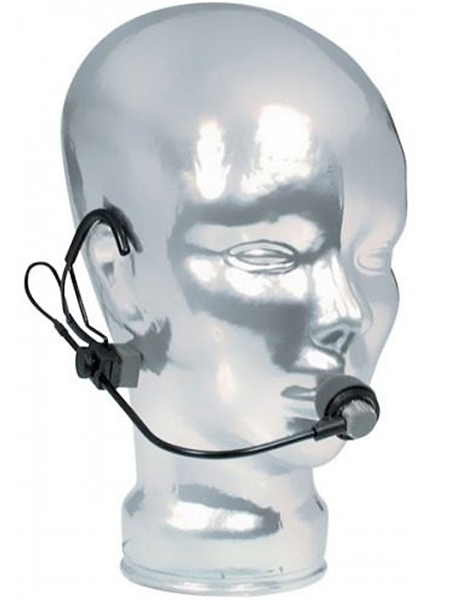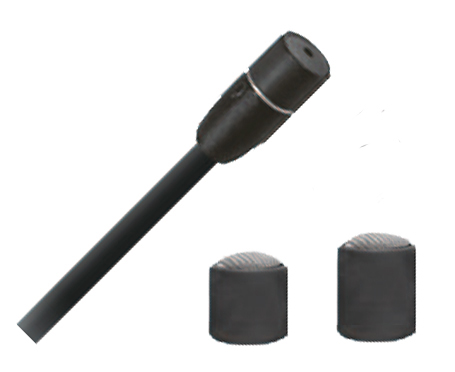Tiny microphones worn by performers are a wonderful tool for live sound. These nearly invisible mics permit hands-free operation. They allow freedom of movement, clear sound and very good gain-before-feedback.
The two most common types of miniature mics are headworn and lavalier. Let’s look at their operating principles and application.
Using Your Head
Headworn mics work great for singers, actors and lecturers. They have a stiff-wire structure that loops around the ear, while a thin adjustable boom extends along the user’s cheek and places the mic capsule off the side of the mouth.
It’s important to take care that the mic is not too close to the mouth or it will produce thumping sounds from breath pops.
Recent headworn models are outfitted with elements that are extremely small—almost invisible. For example, the Countryman E6 Earset element is only 1/10 of an inch in diameter, and has snap-on cables for use with a variety of wireless transmitters. Most headset mics are available in different colors to match the user’s skin color.

Usually an omnidirectional polar pattern is sufficient to reject feedback because the mic is so close to the mouth. There are several good choices; for example, DPA recently introduced the d:fine Series of omnidirectional headset mics.
For a little more isolation, unidirectional models work well. Two popular examples are the Audio-Technica ATM73A (cardioid) and Countryman ISOMAX (cardioid and hypercardioid).
A differential or noise-cancelling headworn mic offers optimum gain-before-feedback and isolation. The capsule picks up the voice but cancels sound at a distance, such as stage monitors and instruments on stage. It’s a great choice for singing drummers.
The mic must be worn with the foam windscreen touching the mouth; otherwise the voice itself is cancelled. An example is the Crown CM-311A, now available from AKG.
Lav Essentials
Lavalier mics (also called lapel mics) are a popular choice for live applications with at least one person speaking, such as corporate events/meetings and worship services, and they’re also used in live stage productions, sometimes attached to an actor’s hair.
Lav designs have a tiny electret-condenser mic capsule connected by a thin cable to an XLR connector or wireless transmitter connector.
A clip attaches the capsule to the user’s shirt, collar, tie, or lapel, with the cable able to be hidden under clothing, secured by adhesive tape (and sometimes bandages) to prevent cable-rubbing noise.
The capsule output is unbalanced, medium impedance. Inside the XLR connector is a circuit that converts the output signal to balanced, low impedance.
It also converts phantom power from the mixer into DC bias to power the capsule’s FET (field-effect transistor).
If the lav is for wireless use, the mic receives DC bias directly from the wireless transmitter. A mini connector on the mic cable mates with the mic connector on the transmitter.






















